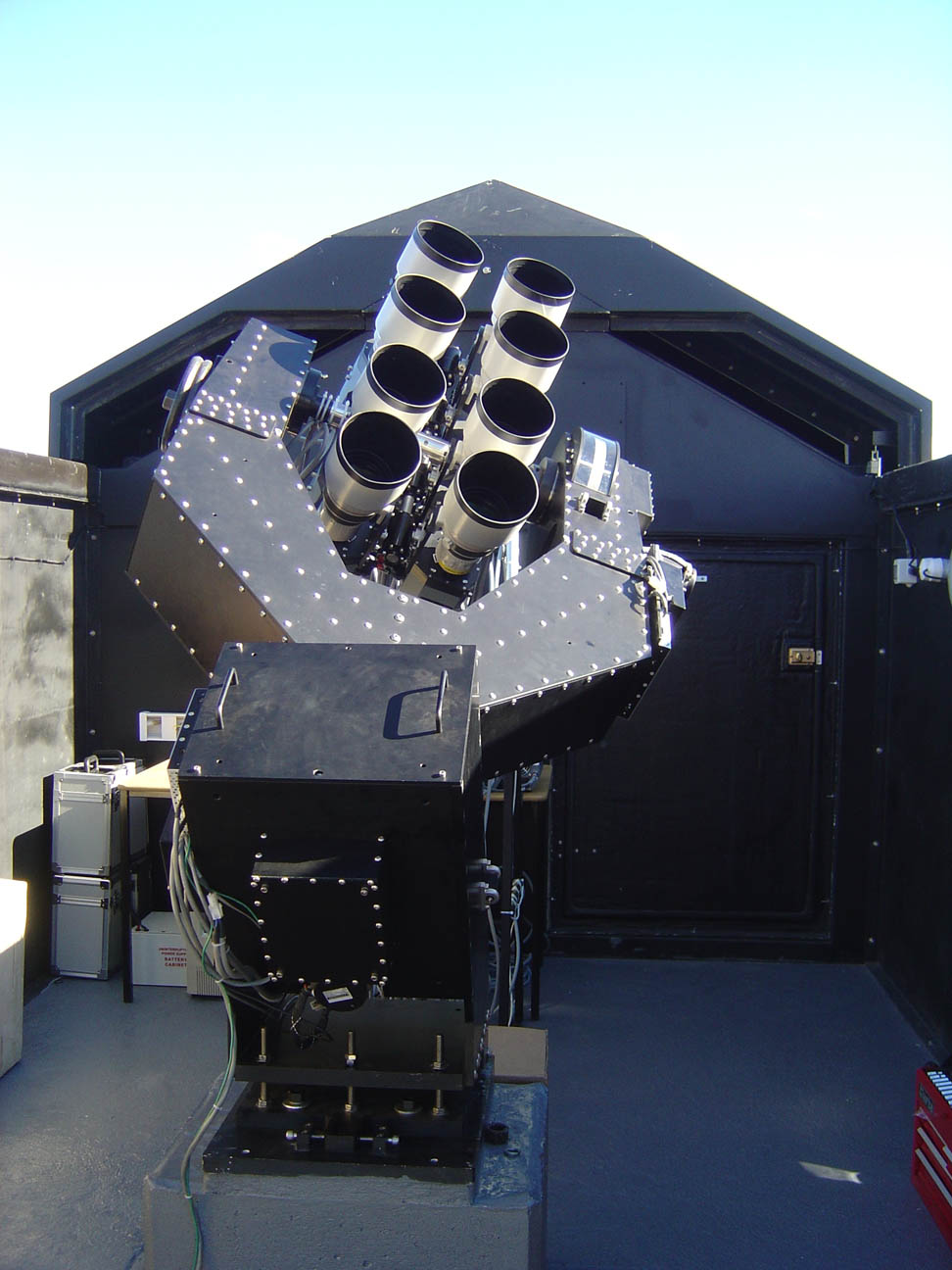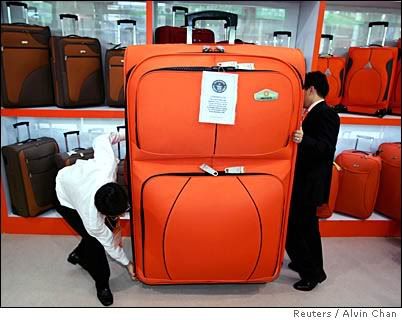Chris Dodkin
West Coast Correspondent
How about one of these then? 

Yes, that is an array of 8 Canon super-teles!
They belong to SuperWASP, the UK's leading extra-solar planet detection program.
SuperWASP consists of two robotic observatories that operate continuously all year around, allowing them to cover both hemispheres of the sky. The first, SuperWASP-North is located on the island of La Palma amongst the Isaac Newton Group of telescopes (ING). The second, SuperWASP-South is located at the site of the South African Astronomical Observatory (SAAO), just outside Sutherland, South Africa.

The SuperWASP observatories each consist of an array of 8 cameras, backed with a high-quality CCDs. These cameras are extremely wide field - upto 2000 times greater than a conventional astronomical telescope. The cameras continuously image the night sky, each camera capturing up to 100,000 stars per image (this many are needed to stand any chance of detecting transiting planets). This amounts to over 50 gigabytes of observational data per night, per observatory, which is automatically processed by a custom built computer 'Pipeline'.
More details on this amazing set-up here: SuperWASP Homepage

Yes, that is an array of 8 Canon super-teles!
They belong to SuperWASP, the UK's leading extra-solar planet detection program.
SuperWASP consists of two robotic observatories that operate continuously all year around, allowing them to cover both hemispheres of the sky. The first, SuperWASP-North is located on the island of La Palma amongst the Isaac Newton Group of telescopes (ING). The second, SuperWASP-South is located at the site of the South African Astronomical Observatory (SAAO), just outside Sutherland, South Africa.

The SuperWASP observatories each consist of an array of 8 cameras, backed with a high-quality CCDs. These cameras are extremely wide field - upto 2000 times greater than a conventional astronomical telescope. The cameras continuously image the night sky, each camera capturing up to 100,000 stars per image (this many are needed to stand any chance of detecting transiting planets). This amounts to over 50 gigabytes of observational data per night, per observatory, which is automatically processed by a custom built computer 'Pipeline'.
More details on this amazing set-up here: SuperWASP Homepage

